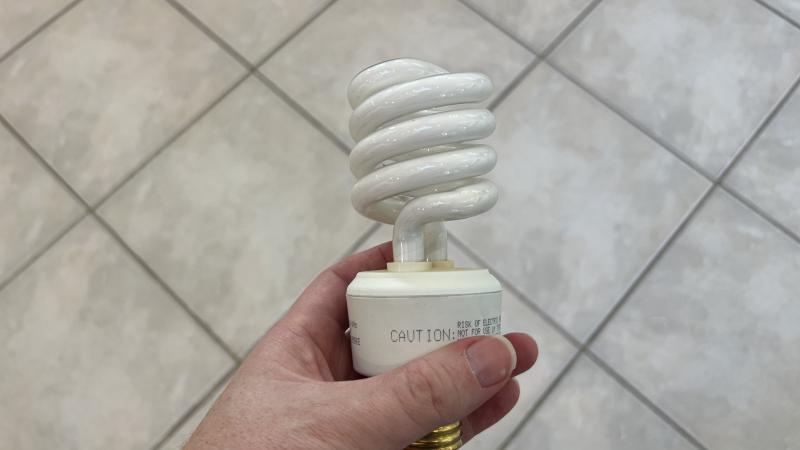Biden's green economy plans stumble as no one considered how much electricity would be needed
To grow industrial activity at the scale Biden envisions will require an enormous amount of electricity. Where all that power would come from wasn’t factored into the plans. Projects are already having trouble finding enough power.
The passage of the Inflation Reduction Act propelled forward President Joe Biden’s vision of a clean energy economy. As outlined in a 2023 guidebook, this remaking of the U.S. economy includes billions in funding for green tech manufacturing — everything from hydrogen production to batteries to solar panels.
The plan will not only create jobs and investments for Americans, according to the Biden administration, it will lower the nation’s dependence on China, which currently controls 80% of the global production in polysilicon and other components used in solar panels, 80% of wind-turbine components, and 89% of the refining to produce neodymium, a rare-earth element used in wind turbines.
Missing factors
To grow industrial activity at the scale Biden envisions, however, will require an enormous amount of electricity. China has been able to feed its green manufacturing economy by building out large amounts of coal capacity, while the U.S. has been shutting down a lot of its coal-fired capacity.
When the plans were laid out for this ramping up of U.S. green manufacturing, it doesn’t appear anyone considered that the U.S. grid would need a much larger supply of electricity. Where all that power would come from wasn’t factored into the plans. As a result, projects are already having trouble finding enough power, and the green economy has just gotten underway.
“It's no surprise this is happening, and it shouldn't be a surprise to anyone in our government. Although, it always seems to be,” David Blackmon, an energy analyst who publishes “Energy Absurdities,” told Just The News.
A $4 billion Panasonic electric vehicle battery factory in DeSoto, Kansas, required more energy than the state's wind and solar portfolio could provide. According to the Kansas City Star, the utility is delaying the retirement of a coal plant, originally set for 2023, until 2028, when the plant will be converted to run on natural gas.
The Washington Post reports that Georgia regulators are trying to figure out how to ensure enough power on the grid to meet the demands of new green-energy factories.
In both cases, climate activists oppose efforts to supply the plants’ electricity with fossil fuels.
“Not only are we squandering an opportunity to access local Kansas clean energy resources that invest in our state, but it also is not doing anyone else a favor as far as more greenhouse gas pollution,” a lobbyist with the Kansas Sierra Club, who helps lead its “Beyond Coal” campaign, told the Star about the delayed closure of the coal plant.
Exponential growth
These are just a couple examples of a nationwide problem, which is likely to grow. The Environmental Studies Department at Wellesley College put together a website to track the North American clean-energy supply chain projects spreading coast to coast across North America. The 427 projects tracked on the site represent $254 billion in investments. The count of projects is based on the announcement of the capital investment, and many of them will come online in the next several years.
Data centers are also draining limited supplies of electricity. Without an increase in electricity supplies, there won’t be much left for future solar panel, wind turbine, battery and electric vehicle factories.
It can take decades to build wind farms and solar farms, as well as the transmission lines and battery facilities to support them, and the pace is slowing as the industry encounters financial troubles and community opposition.
Should the U.S. also expand its mining capacity to satisfy the mineral supply chains that China controls, as the Biden administration wants to do, that would exponentially increase energy demands for another industrial sector.
Blackmon suggests that one reason a solution to the grid problems wasn’t factored into Biden’s green energy economy has to do with the fact Democrats are connected to the industries that stood to benefit from federal green incentives.
“We let these politicians and their regulators off the hook when we characterize them as being merely naive and stupid. They're doing this actively to satisfy the desires of their client industries,” Blackmon said.
The Daily Caller reported Thursday that $14 billion of a $20 billion Environmental Protection Agency program funded by the Inflation Reduction Act went to three organizations with ties to the Biden administration and the Democratic Party.
Energy and growth
Mark Mills, founder of the National Center for Energy Analytics, told Just The News that it’s a well known fact that industry requires a lot of energy.
“It distills to a very simple fact, and it’s an easy thing to assert because it’s unchanged across countries and time — economic growth leads to more energy use. And if the growth is anchored in us doing the energy-intensive manufacturing instead of other people, then our energy use will be greater,” Mills said.
Besides depleting the electricity supply, wind and solar also drive up the cost of electricity. As the Biden administration pursues its renewable energy goals, it will effectively undermine its green economy goals.
“If we make our energy more expensive, especially electricity, then the manufacturing won't get built, even with the incentives. Because they won't be able to afford it,” Mills said.
Kevin Kilty, a retired mechanical engineer, told Just The News that beyond the short-sightedness of the administration’s climate goals is the impracticality. The administration is betting that it can develop a hydrogen economy. While hydrogen doesn’t produce carbon dioxide emissions, to create hydrogen requires energy. Then as much as 46% of that energy is lost when it’s burnt.
“They want to reduce the amount of CO2 produced in generating electricity by making hydrogen and then bleeding it into natural gas lines to co-burn it with natural gas. Then store that electricity in batteries, and deliver it back out again to generate hydrogen. It just seems like no one can possibly come up with schemes any more complicated to deliver energy,” Kilty said.
More demands
Other green initiatives coming out of the Biden administration will also add to demands on the grid. Biden’s electric vehicle mandates will transition a lot of energy currently satisfied with gasoline and diesel over to the electricity grid.
In a thread on X, Steve Everley, managing director with FTI consulting, points out that 60 million homes are heated primarily with natural gas. The push toward electrification, according to Everley’s calculations, would mean a 1,700% increase in electricity demand for heating using space heaters. Heat pumps would reduce that load, Everley said, but it would still be a significant jump in electricity demand if natural gas is eliminated.
Kilty said he calculated the cost to run a heat pump at his home in Wyoming in December 2022. His utility bill, he said, would have increased three-fold. He noted that that was a particularly cold month for much of the country.
“We're going to push demand into new times of the year. We're going to push demand into different times of the day. All of this is going to be a surprise. I think it will probably represent all kinds of surprises to people everywhere. I don't see how we can make this transition so fast and not make huge errors that are really expensive,” Kilty said.
Hydrocarbons
The lack of planning to ensure the green economy would have the electricity supply it would need might not be surprising considering the lack of planning in the overarching goal, which is to transition away from fossil fuels. Mills said that’s simply not going to happen.
“As any energy analyst knows, it’s not just that you need more electricity. You need the chemical features of hydrocarbons to make things,” Mills said.
Hydrocarbons are the chemical compounds that form the basis of oil, natural gas and coal. Metallurgical coal, also known as coking coal, is used to create steel and the polysilicon found in solar panels. Natural gas is used to make fertilizers.
“Everything that is being claimed about a transition away from hydrocarbons is imaginary and fundamentally naive.”
It’s often said that fossil fuels are 80% of the energy mix, but Mills said that ignores the chemical role that they play in manufacturing. Adding that, he said, it’s reasonable to state that hydrocarbons have a role in 100% of the things we make.
“You can't make windmills without hydrocarbons. You can't make electric cars without hydrocarbons. You can't grow food without hydrocarbons. You can't make hydrogen electrolyzers without hydrocarbons in the manufacturing process. So hydrocarbons are essential for 80% of primary energy, but they're essential for 100% of what society does,” Mills said.
The Facts Inside Our Reporter's Notebook
Links
- outlined in a 2023 guidebook
- 80% of the global production
- 80% of wind-turbine components
- 89% of the refining to produce neodymium
- building out large amounts of coal capacity
- Energy Absurdities
- According to the Kansas City Star
- Washington Post reports
- Beyond Coal
- website to track
- Data centers
- can take decades
- pace is slowing
- community opposition
- Biden administration wants to do
- exponentially increase
- Daily Caller reported Thursday
- National Center for Energy Analytics
- wind and solar also drive up the cost of electricity
- pursues its renewable energy goals
- can develop a hydrogen economy
- 46% of that energy is lost when it's burnt
- Biden's electric vehicle mandates
- 60 million homes are heated primarily with natural gas
- particularly cold month
- chemical compounds
- create steel
- polysilicon found in solar panels
- make fertilizers















